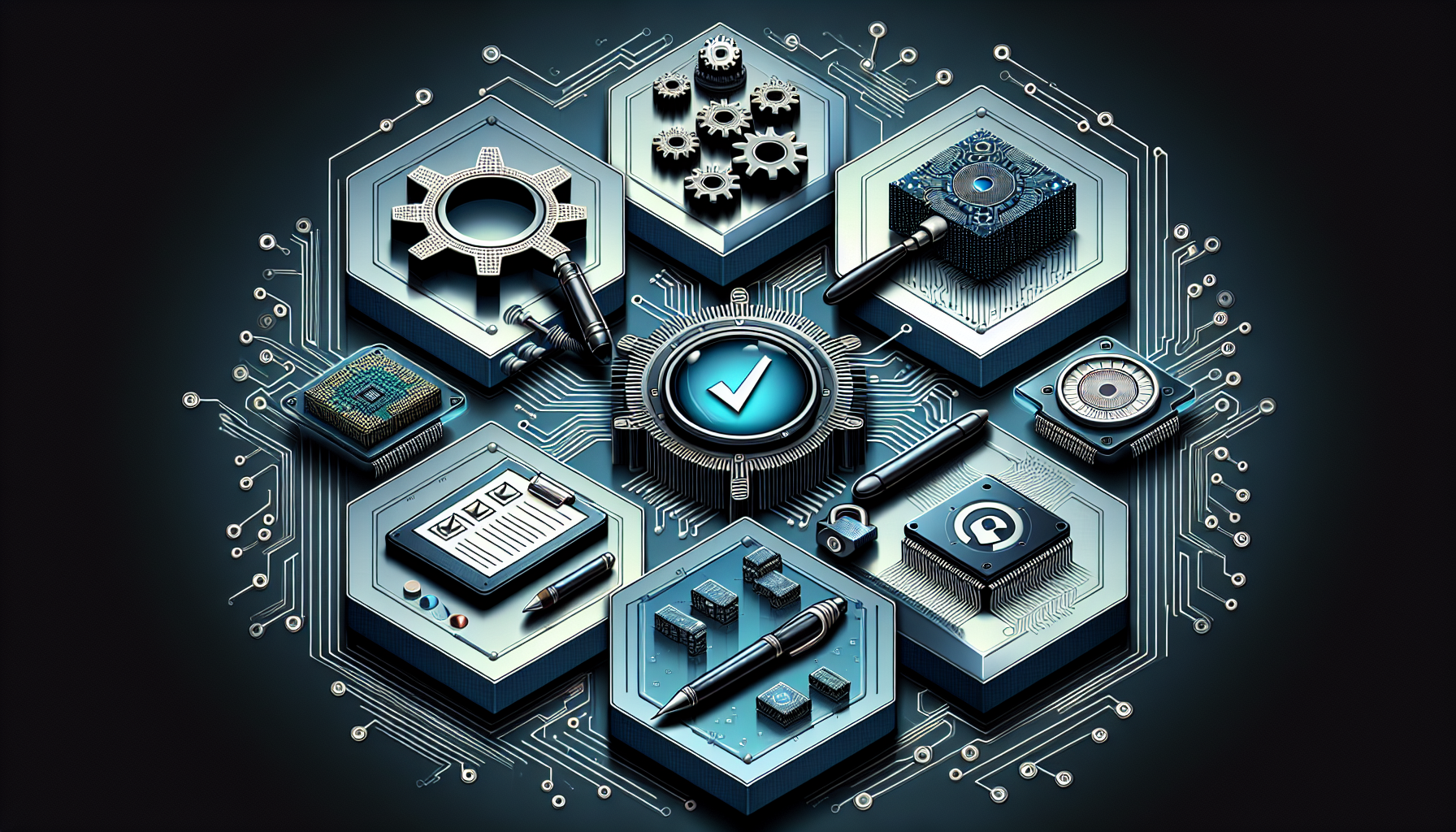The Importance of Maintaining Tech Integrity
In this digital era, the integrity and performance of technological devices and software are absolutely critical for both individuals and businesses alike. Whether it’s a smartphone, a software application, or a complex corporate infrastructure, ensuring that technology runs smoothly is a top priority. Performing regular quality checks on your tech can prevent unexpected failures that might otherwise result in data loss, financial cost, or even reputational damage. In the next sections, we will explore six effective strategies for maintaining the quality and reliability of your technological assets.
Strategy 1: Implement Routine Inspections
Like a well-oiled machine, tech devices and systems require regular maintenance to operate at their best. Setting up a schedule for routine inspections is crucial. This involves evaluating all hardware for signs of wear or potential failure, as well as updating software to patch any vulnerabilities. The checklist might include:
- Cleaning dust from hardware components
- Checking battery health
- Updating operating systems and applications
- Running diagnostics to detect any lurking issues
Strategy 2: Utilize Automated Monitoring Tools
The manual inspection of technology can be time-consuming, and unfortunately, human error cannot be completely eliminated. This is where automated monitoring tools come into play. These sophisticated systems continuously oversee your tech’s performance, alerting you to any irregularities that fall outside normal parameters. They prove especially valuable because they can also predict when a component is likely to fail, providing you with the opportunity to address the problem proactively.
Strategy 3: Embrace a Culture of Quality among Users
Quality assurance doesn’t rest solely on the shoulders of IT specialists. Cultivating a culture of quality among all users of technology can significantly enhance the overall health of your tech environment. Training staff in best practices for device handling, password management, and recognizing phishing attempts contributes enormously to maintaining tech quality. It also reduces the risk of user-induced errors and security breaches.
Strategy 4: Perform Stress Testing and Load Testing
In order to anticipate how your technology will perform under pressure, it’s important to conduct stress and load testing. Stress testing pushes your systems to the extreme to determine the maximum capacity they can handle before crashing. Load testing, on the other hand, is more about understanding how your technology performs under typical and peak usage conditions. Both tests can reveal weaknesses that might not be evident under normal circumstances.
Strategy 5: Ensure Rigorous Cybersecurity Measures
Keeping Defenses Updated
In today’s online world, threats to technology can come in many forms including viruses, malware, and cyberattacks. Ensuring that your tech has the most up-to-date cybersecurity measures in place is non-negotiable. This encompasses not just antivirus software, but also firewalls, intrusion detection systems, and end-to-end encryption protocols. Regularly updating these defenses will ward off both known and emerging threats.
Employee Training and Awareness
Implementing a comprehensive cybersecurity infrastructure must be complemented with employee education. Staff should be trained on how to handle sensitive data, be aware of the latest cybersecurity threats, and know the procedures to follow in the event of a breach. This layered approach to security is often referred to as defense in depth, and it provides a robust safeguard against external and internal security challenges.
Strategy 6: Engage in Preventive Maintenance
The final strategy to discuss involves preventive maintenance. This pro-active approach aims to address potential issues before they manifest into significant problems. Preventive maintenance can save considerable resources and downtime, as well as extend the life of your technology. Simple actions such as keeping systems clean, ensuring adequate ventilation, and replacing aging components can all contribute to avoiding unnecessary outages and maintaining consistent tech performance.
Conclusion: Ensuring Longevity and Efficiency of Your Tech
The strategies outlined above provide a robust framework for ensuring that your technology’s longevity and efficiency are maximized. Recognizing the importance of tech quality assurance is only the first step; the next is implementing these strategies with diligence and consistency. Whether you are a casual user, a professional, or a business owner, the health of your technology is paramount. Regularly quality checking your tech can prevent interruptions that impact productivity, protect personal and business data, and provide peace of mind knowing that your tech is ready to support you at all times.
